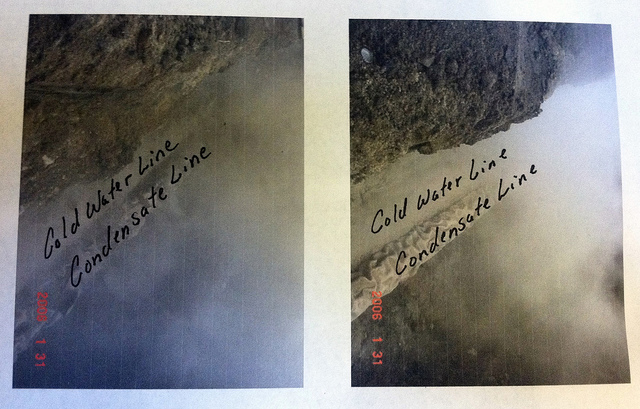Question answered: Why is steam coming out of the ground at Lathrop Homes?
By Jennifer Brandel

Question answered: Why is steam coming out of the ground at Lathrop Homes?
By Jennifer BrandelIf you’ve ever traveled through the six-point intersection at Damen Avenue, Diversey Avenue, and Clybourn Avenue on Chicago’s North Side, you may have noticed one of Chicago’s first public housing sites, Lathrop Homes. It’s a low-rise, campus-like collection of brick buildings along the Chicago River that was commissioned by the Public Works Administration under President Franklin Roosevelt in the 1930s.
John Lincoln from Ravenswood Manor observed something unusual about the site and asked us this:
Why is there steam coming from the ground at housing project on Diversey between the river and Damen? Someone has built iron fences around them as if they are natural geysers.
To see the steam Lincoln is talking about and to learn the answer, check out this video:
Curious City: Why there’s steam blowing out of the ground at Lathrop Homes from WBEZ on Vimeo.
Bennie Gant works for East Lake Management Group, a private management company hired by the Chicago Housing Authority to manage Lathrop Homes. She said a few years ago they built fences around some of the manhole covers where steam escapes “because the tenants said they were afraid they’d get burned, but you would have to stand here an hour or 45 minutes to get burned actually.”
She said tenants have also expressed fears that the steam was toxic, but Gant said she assures residents that there’s nothing dangerous about the steam: it’s just water.
A steam plant on Hoyne Avenue (next to the Damen Avenue bridge that spans the Chicago river) provides the steam heat to all the buildings on the property through thousands of feet of condensate heating lines that loop underground throughout the property. Gant said that in 2006, they spent “quite a bit of money” trying to find the breaks in the heavy plastic encasement around the condensate lines, but ultimately couldn’t locate the problem areas. She said the lines and their casing date back to the mid-1930s, when the property was first built, and digging up and replacing the pipes is an ambitious project the CHA has yet to take on.

Lathrop Homes was named after the Illinois social reformer Julia Lathrop who worked with other reformers including Jane Addams around the turn of the twentieth century.
